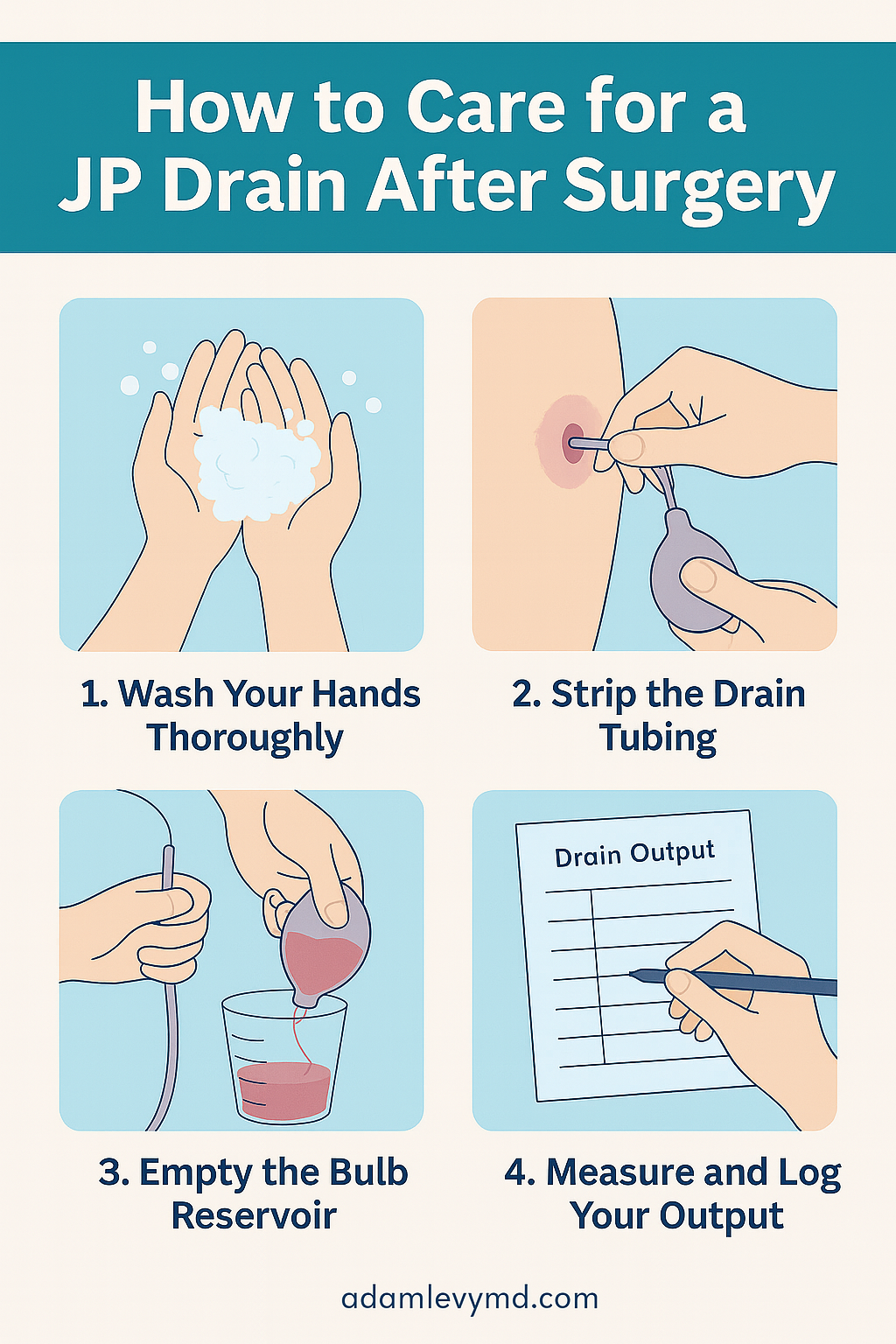How to Care for a JP Drain After Surgery: A Step-by-Step Guide from a Plastic Surgeon
🩺 How to Care for a JP Drain After Surgery: A Step-by-Step Guide from a Plastic Surgeon
If you’ve recently had surgery — such as a tummy tuck, DIEP flap reconstruction, abdominal or breast procedure — your recovery may involve using a Jackson-Pratt (JP) drain. These small, bulb-shaped devices help remove fluid from your surgical site and promote proper healing.
In this guide, I’ll walk you through how to care for a JP drain after surgery, answer frequently asked questions, and introduce a new tool that can make tracking drain output easier and safer.
✅ What Is a JP Drain?
A Jackson-Pratt (JP) drain is a soft, silicone tube that exits near your incision and connects to a bulb reservoir. Its purpose is to remove excess fluid and reduce swelling, infection, or other complications after surgery.
You’ll usually be asked to:
Empty the bulb multiple times a day
Measure and record the output
Watch for signs of infection or blockage
🧼 Step-by-Step Instructions for JP Drain Care
1. Wash Your Hands Thoroughly
Use soap and water or hand sanitizer before touching the drain or bulb.
2. Strip the Drain Tubing
Stripping the tubing helps prevent clogs.
Pinch the tube near the insertion site with one hand
Use your other hand to firmly squeeze the tube and slide your fingers toward the bulb
Tip: Do this 1–2 times per day or as instructed by your surgeon.
Tip: Use hand sanitizer or hand soap between your fingers to make it easier to strip the tubing
3. Empty the Bulb Reservoir
Open the plug at the top of the bulb
Gently squeeze the contents into a measuring cup
Record the volume and fluid appearance
Compress the bulb before closing to reapply suction
For detailed, daily output tracking, consider using DrainTrack — a web-based HIPAA-compliant tool to simplify this process.
4. Measure and Log Your Output
Each time you empty the drain, record:
Volume (in mL or cc)
Time of day
Fluid color (e.g., red, pink, yellow, cloudy)
Tracking this consistently helps your surgeon decide when it’s safe to remove the drain.
🛁 Can I Shower with a JP Drain?
Check with your surgeon, but most allow showering after 48–72 hours. Use:
A waterproof bandage or plastic wrap to protect the drain site
A lanyard or belt clip to secure the bulb during the shower (so it’s not hanging off of you!)
Avoid soaking in tubs or pools until cleared
⚠️ When to Call Your Surgeon
Contact your provider if you notice:
Sudden drop or spike in fluid output
Redness or pus around the insertion site
Foul odor or fever
The drain falling out
Your safety and healing come first — never hesitate to ask.
💡 Track Smarter with DrainTrack
Managing a JP drain is overwhelming for many patients. That’s why I helped develop DrainTrack — a simple, secure tool to log drain output and alert your surgeon when you’re ready for removal.
✅ No app download required
✅ HIPAA-compliant
✅ Works on any phone or tablet
✅ Sends provider alerts when thresholds are met
✅ Sends patient reminders to log daily
Visit DrainTrack.com to try it today — it’s free to use and designed to make recovery easier.
🧠 Frequently Asked Questions
Q: How often should I empty my JP drain?
A: Usually 1–3 times daily or when the bulb is half full.
Q: What color should the fluid be?
A: Early on, it’s usually red or pink, gradually becoming yellow or clear. Anything from Kool-Aid to apple juice color is normal. You should be able to see through the fluid in the tube. Let your provider know if it turns cloudy or foul-smelling.
Q: When can my drain be removed?
A: Most drains are removed when output is <30 mL/day for two consecutive days — but your surgeon will decide based on your healing.

